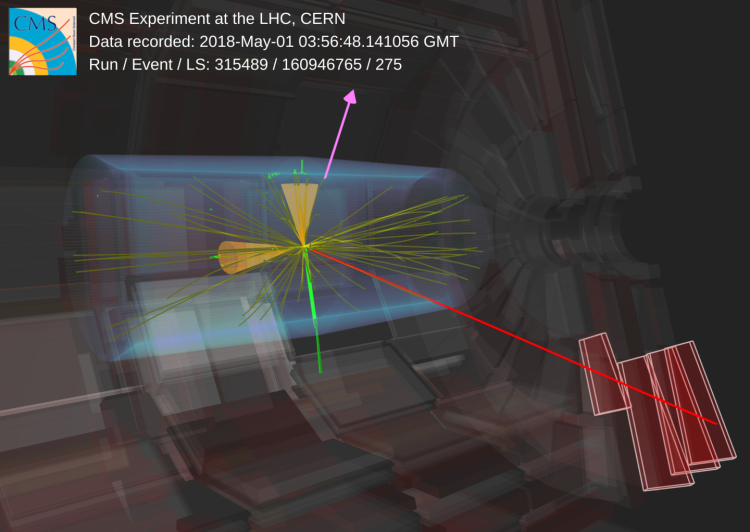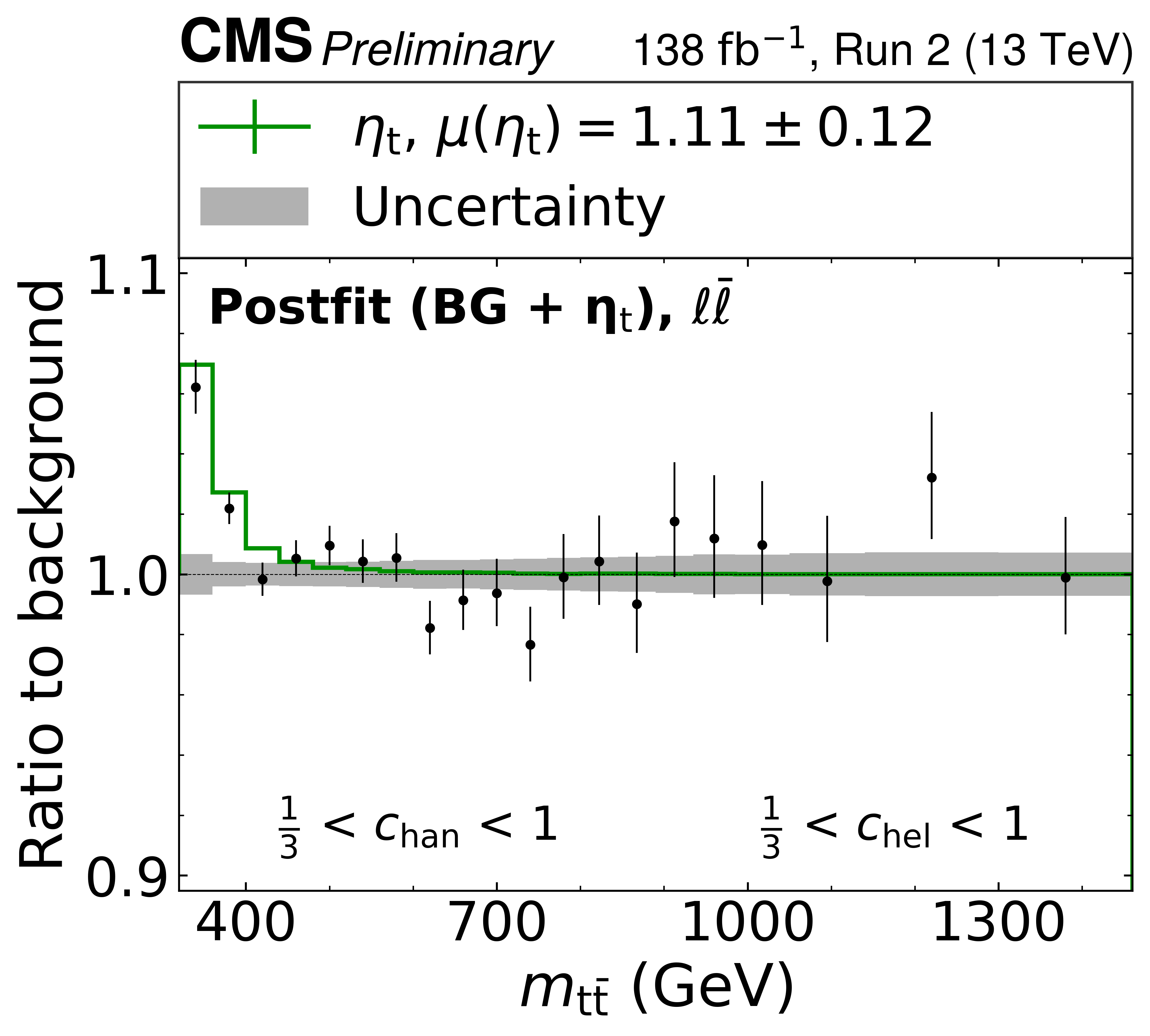
Detailed study of collisions producing top quarks reveals discrepancy with respect to theoretical predictions.
The CMS collaboration has preliminarily reported an unexpected effect in interactions involving top quark pairs. These results might uncover new phenomena and provide insight into the behavior of quarks and their relationship to the Higgs boson.
The top quark is the heaviest elementary particle in the Standard Model of particle physics and shares a strong connection with the Higgs boson, which is responsible for giving mass to all elementary particles. Thus, the top quark plays a key role in exploring the Higgs sector and determining whether the Higgs field is more complex than we currently think — especially when it comes to the search for possible heavier versions of the Higgs boson.
These particles are predicted to have no spin and could appear in two forms: a pseudoscalar particle (A) or a scalar particle (H). The difference between the two lies in how their properties change after a mirror reflection. With large enough mass, these particles are expected to decay into a top quark-antiquark pair in many beyond the Standard Model scenarios.
In this search, angular information of the decay products is used to increase the sensitivity to possible signals and discriminate between the A or H bosons. Comparing the proton-proton collisions recorded by the CMS detector with the state-of-the-art theoretical predictions, we observed an unexpected excess in the production of top quark-antiquark pairs near the mass threshold, where the available energy is just enough to create the pair.

Figure 1: Ratio between the observed distribution of the reconstructed invariant mass of the top quark-antiquark pair system in the most sensitive category of the angular observables used in the dileptonic channel, and the corresponding expected distribution according to the perturbative QCD background model. The contribution of the effective top-antitop bound state prediction, scaled to match the observed data, is shown in green. The presence of the excess near the mass threshold is visible.
The excess observed in the data favors the pseudoscalar hypothesis more than the scalar one. “Now, an important question is whether this is a fundamental new particle or the result of a bound state between a top quark and an antiquark,” says Laurids Jeppe, PhD student at DESY. Or could it just be a subtle side effect of imperfect modeling of the backgrounds, which involves very challenging calculations? Perhaps it is even something more unexpected, challenging our current understanding of particle physics.
It has long been thought that the top quark is too heavy and short-lived to form bound states (i.e. forming new particles with other quarks), unlike lighter quarks. However, this possibility isn’t entirely ruled out. "Top quarks decay much faster than it takes to complete even a single orbit. Instead, they can be thought of as slow-moving top quarks that exchange gluons, leading to binding effects. This quasi-bound state would exhibit pseudoscalar properties consistent with our observations", explains Alexander Grohsjean, a scientist at the University of Hamburg.
"More theoretical work is needed to model the properties of this system reliably," says Afiq Anuar, a postdoctoral researcher at DESY. "Our next step will be to explore the origin of this fascinating new signal. Exciting times lie ahead!"
Read more about these results:
-
CMS Paper (HIG-22-013): "Search for heavy pseudoscalar and scalar bosons decaying to top quark pairs in proton-proton collisions at sqrt(s) = 13 TeV"
-
Display of collision events: CERN CDS
-
@CMSExperiment on social media: LinkedIn - facebook - twitter - instagram
- Do you like these briefings and want to get an email notification when there is a new one? Subscribe here

